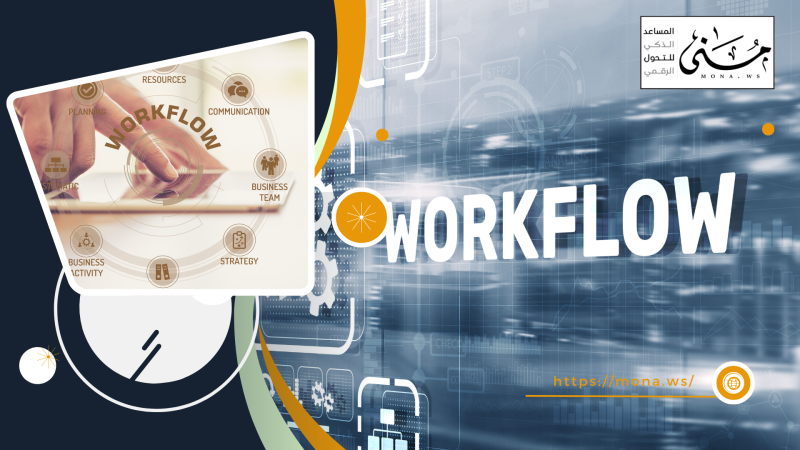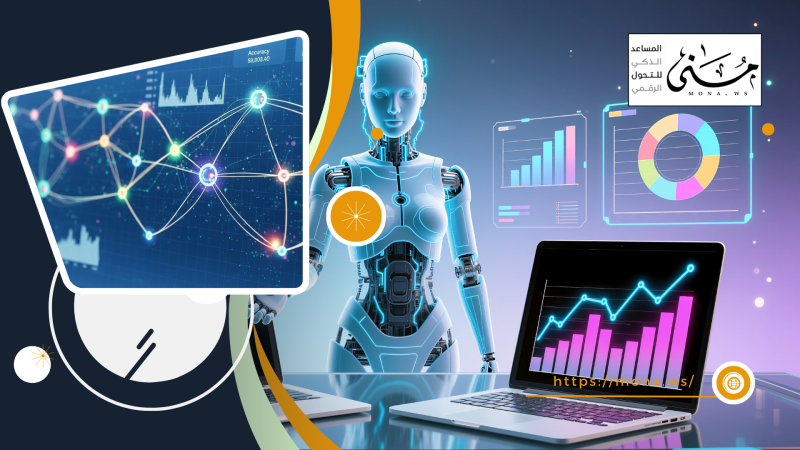At Mona News, we follow developments moment by moment and provide readers with reliable information through a balanced and comprehensive lens. We are committed to covering the latest local, Arab, and global updates in politics, economics, technology, society, and culture, with a strong focus on in-depth analysis and transparency. Our goal is to keep readers constantly informed and to help them understand what is happening around them through accurate content, clear language, and a professional media approach rooted in credibility.
Within this broader focus on technology and digital transformation, Human Resources stands out as one of the fields most influenced by the data revolution. HR departments in modern organizations are no longer limited to traditional administrative tasks like managing employee files or tracking attendance. Instead, they have become a vital data hub that senior leadership relies on for decision-making. With rising competition and the fast-changing labor market, HR Analytics has become a core tool for understanding workforce reality, forecasting the future, and improving performance efficiency.
In this report, we highlight the most important methods of data analysis in HR, and how they are practically enabled through intelligent systems such as DocSuite HR, which provides an integrated operational and analytical environment to support planning, measurement, and workforce development more effectively.
Why Has HR Data Analysis Become a Necessity?
HR departments generate massive volumes of data every day: payroll, working hours, attendance and leave records, performance evaluations, interview results, recruitment pipelines, training programs, employee requests, and even satisfaction feedback.
However, value does not come simply from storing data. The real challenge lies in turning these numbers into clear insights that lead to strong decisions. This is where HR Analytics plays a critical role, raising managerial efficiency and giving organizations a precise view of their workforce.
In practice, HR data analysis enables organizations to:
• Measure Productivity, Commitment, and Job Satisfaction
Data analysis allows leadership to assess productivity not through impressions, but through clear indicators such as achievement rates, team output, actual working hours, late arrivals, and absenteeism.
It also helps measure commitment by comparing attendance patterns with performance outcomes and linking them to motivation levels or workload pressure.
Employee satisfaction can be evaluated through surveys, the volume of complaints or transfer requests, and participation in internal initiatives.
Result: Management gains a real control panel reflecting the organization’s “pulse,” rather than relying on assumptions.
• Identify the Causes of Turnover and Talent Leakage
Turnover rarely happens suddenly. It is usually preceded by measurable warning signs that can be captured through analytics.
For example: a noticeable drop in a high performer’s output, rising absences, declining engagement in meetings or training, or frequent resignation/transfer-related requests.
Analyzing such patterns helps answer: Where is talent leaving? Why? Is it low compensation, an unmotivating environment, ineffective direct management, or a development gap?
Result: Organizations can intervene early to retain talent instead of losing them and paying higher costs for replacements.
• Improve Recruitment Quality and Reduce Time-to-Fill
Recruitment analytics makes it possible to evaluate the effectiveness of each hiring channel. Do top candidates come from LinkedIn, internal portals, or paid campaigns?
It also measures time-to-fill by tracking each stage: announcement time, screening time, interview cycles, and decision approval.
This reveals exactly where delays occur—screening, scheduling, or offer authorization.
Result: Faster hiring, higher quality recruits, and lower cost per hire.
• Optimize Payroll Efficiency and Operating Costs
Payroll is one of the largest spending items in any organization. Payroll analytics can reveal:
-
Is one department’s incentive cost inflated compared to its productivity?
-
Are there large pay gaps for the same job roles?
-
What is the true cost of overtime, and is it justified?
-
How does absenteeism or lateness impact cost and output?
With such insights, organizations can recalibrate salary structures and incentives to ensure fairness, efficiency, and reduced financial waste.
Result: More accurate financial planning and lower operating cost without harming performance.
• Build Targeted Training and Development Plans
Instead of running broad training sessions that many employees may not need, analytics identifies real skill gaps:
Who needs leadership training?
Who needs technical upskilling?
Is weak performance tied to a specific skill deficit or to workplace factors?
Training impact can also be measured afterward: Did performance improve? Did productivity rise? Or did outcomes remain unchanged?
Result: Training becomes a measured investment with a clear return, not a routine activity.
Key Data Analysis Methods in Human Resources
1) Descriptive Analysis: What Is Happening Inside the Organization?
Descriptive analysis is the first step in HR Analytics. It summarizes the current situation and converts daily HR data into simple, readable indicators. It doesn’t explain causes or predict future outcomes; it simply answers: What is happening right now?
In HR, descriptive analysis is used for:
-
Measuring average monthly absenteeism
-
Tracking headcount distribution across departments
-
Monitoring payroll costs month by month
How does this appear in DocSuite HR?
-
Payroll Processing (Masir Al-Rawatib): Detailed monthly cost breakdowns and period-to-period comparisons.
-
Attendance & Leave Management: Reports on attendance rates, lateness, and overtime hours reflecting real-time compliance.
-
Reports & Statistics: Interactive dashboards that visually summarize HR indicators quickly without manual effort.
2) Diagnostic Analysis: Why Is This Happening?
Once descriptive analysis shows what is happening, diagnostic analysis digs deeper into the reasons behind those numbers. It answers: Why did this happen?
In HR, it is used to:
-
Explain rising absenteeism in a specific team
-
Understand declining performance in certain departments
-
Analyze the reasons behind employee resignations
DocSuite HR supports this through:
-
Talent Management & Performance Appraisal: Linking performance outcomes to influencing factors such as training, workload pressure, or leadership style.
-
Employee Self-Service System: Revealing patterns of recurrent requests and complaints (leave, transfers, grievances), helping identify root causes before they escalate.
3) Predictive Analysis: What Will Likely Happen Next?
Predictive analysis uses historical data to infer patterns and forecast future outcomes instead of only reviewing the past. It answers: What is likely to happen if trends continue?
In HR, it helps:
-
Forecast roles that may face shortages within six months
-
Predict attrition risks among high performers
-
Estimate future payroll budgets based on growth scenarios
DocSuite HR enables predictive analysis through:
-
Recruitment Portal & Candidate Filtering + DocSuite ATS: Analyzing recruitment history to forecast real workforce needs.
-
Onboarding & Offboarding Management: Tracking stability indicators from hiring through integration, performance stages, and exit, supporting retention forecasting.
4) Prescriptive (Recommendations) Analysis: What Is the Best Decision?
Prescriptive analysis goes beyond prediction by recommending the most effective solutions. It answers: What should we do now to achieve the best outcome?
In HR, it supports decisions like:
-
Selecting the best incentive structure to raise performance
-
Reallocating employees across departments based on real needs
-
Designing training programs grounded in actual skill gaps
DocSuite HR supports this via:
-
Meeting & Shift Scheduling Management: Building data-driven schedules that balance workloads, reduce fatigue, and improve compliance.
-
Talent Management System: Identifying best candidates for promotions or redeployment based on performance data and competencies.
5) Exploratory Analysis: What Can We Discover in Our Data?
Exploratory analysis is especially valuable when the organization does not have a specific question, but wants to explore data to discover hidden patterns or unexpected relationships.
In HR, it can uncover:
-
Links between training and performance improvement
-
Common traits of employees with the highest retention
-
How workplace environment impacts productivity
DocSuite HR facilitates this through:
-
Flexible Reports & Statistics: Allowing deep filtering by departments, time frames, job categories, or specific cases for multidimensional exploration.
-
Electronic Signature: Capturing a digital footprint for every HR process, ensuring data completeness and reliability, making patterns easier to discover.
How Smart Systems Are Shaping the Future of HR
In organizations still relying on Excel sheets or manual processes, data is often incomplete or delayed, making accurate analysis difficult.
In integrated platforms like DocSuite HR, every step is automatically recorded—from recruitment to exit—creating a complete “data map” for both employees and the organization.
Key advantages of DocSuite’s HR digital transformation include:
-
Centralized data in one platform
-
Reduced errors and duplication
-
Instant on-demand reporting
-
Faster decision support instead of delayed insights
Conclusion
HR data analysis is no longer optional; it is the fuel of smart management. The more accurate and organized the data, the faster, fairer, and more effective decisions become. With solutions like DocSuite HR—covering payroll processing, attendance, self-service, talent management, recruitment, ATS tracking, shift scheduling, reporting, and electronic signatures—HR evolves into a strategic, evidence-driven engine rather than a function dependent on intuition.









Comments
Add New Comment